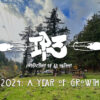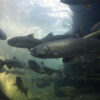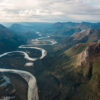|
Getting your Trinity Audio player ready...
|
Typhoon Merbok, fueled by global warming and unusually high Pacific Ocean temperatures pounded Alaska’s vulnerable coastal communities on Saturday, September 17th, 2022 while the region’s Indigenous populations stock up food and supplies during fall harvest season. While storms aren’t unusual in Northwest Alaska, Typhoon Merbock was unusual in the fact that it built up over unusually warm water, waves reaching 50 feet over the Bering Sea, and it’s storm surge sending water levels into communities at near record highs along with near hurricane force winds. Climate scientist, Rick Thoman of the University of Alaska Fairbanks was asked why the storm was so unusual and the impact it’s having on coastal Alaskan communities. He explained that the Typhoon formed in a part of the Pacific Ocean, far east of Japan where historically few typhoons form. He states, “The water there is typically too cold to support a typhoon, but right now, we have extremely warm water in the north-central Pacific. Merbok traveled right over waters that are the warmest on record going back about 100 years,” which is telling considering the country’s history and dependence on fossil fuels.
The following Monday, state officials were making contact with remote villages along Alaska’s coastline to determine the need for food and water, and to assess the damages caused by the massive storm. The state identified five communities, Hooper Bay, Scammon Bay, Golovin, Newtok, and Nome to be the most impacted by the storm and flooding, and disaster relief efforts are already underway to alleviate the pressure in these regions as communities prepare for freezing temperatures and the harsh climate of winter. To understand the urgency of relief efforts, in Shaktoolik, Alaska, they lost their protective berm, a raised barrier of land that protects fresh water sources from salty seawater. Prior to the berm being built, the community’s freshwater supply was easily inundated with saltwater. The community is now at greater risk of flooding through the fall season, and even a moderate storm could inundate their fresh water supply. Although they can rebuild it, the small window of time, money and resources going into winter will require federal aid, and donations to help see these communities through the most challenging of times.
Another important impact is to hunting and fishing camps along the coast, which are almost exclusively Indigenous communities. Due to tribal dependance on hunting and fishing, these camps are crucial, and are expensive to rebuild. As fall temperatures drop and we approach winter, the time to make necessary repairs is running short. In this region of Alaska, it is the middle of hunting season, and for tribes and villages along the coast it isn’t for recreation, but to provide and feed their families through long winters. If you would like to donate to relief efforts for tribes and communities impacted by Typhoon Merbok, please visit The Alaska Community Foundation’s Western Alaska Disaster Recovery Fund website. This fund was created to address the immediate needs of the communities in Western Alaska affected by Typhoon Merbok, and 100% of your gift will go directly to support the relief efforts to help tribes, villages, and communities in need. Prayers up to our relatives in Alaska.
Indigenous Peoples Power Project









